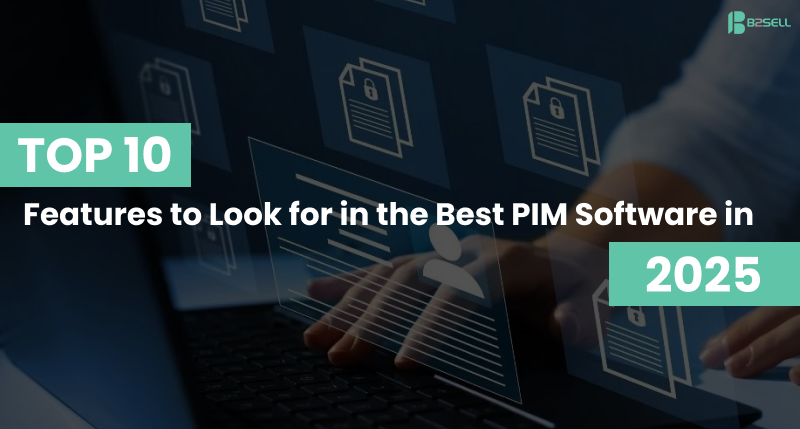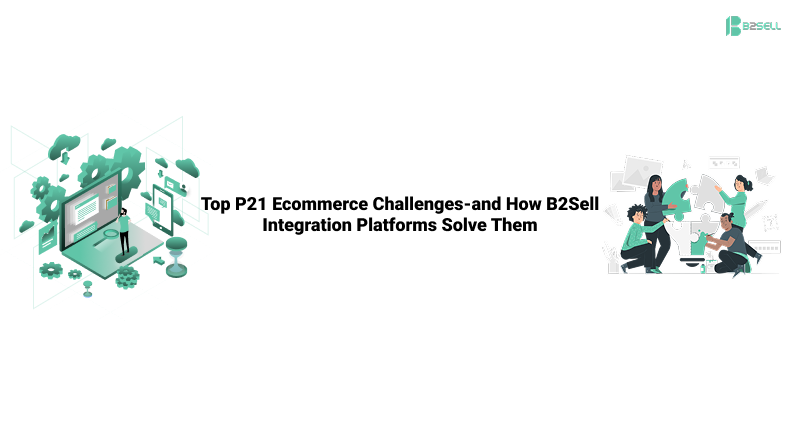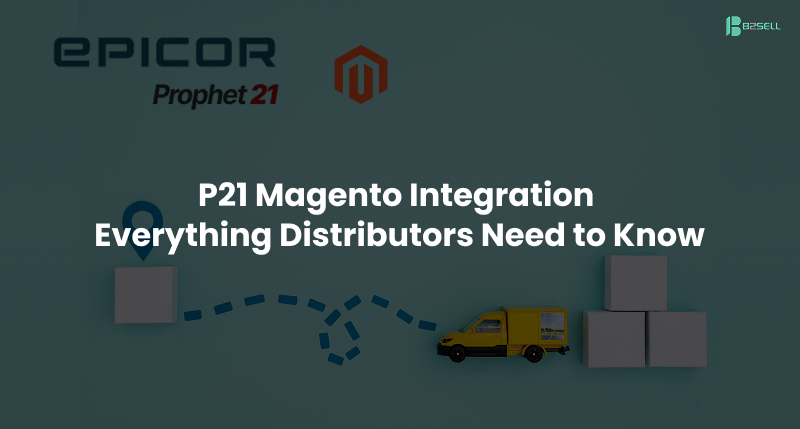Introduction: Why Choosing the Right PIM Software Matters in 2025
In 2025, the digital commerce landscape is more competitive than ever. Customers expect consistent, rich, and accurate product information across every touchpoint—websites, marketplaces, mobile apps, social media, and even physical catalogs. Managing that content manually across multiple channels is not only time-consuming, but it’s also prone to errors and inconsistencies.
That’s where Product Information Management (PIM) software becomes essential. A robust PIM system empowers businesses to centralize, enrich, and distribute product data efficiently and at a scale. Whether you're a manufacturer, distributor, or retailer, choosing the best PIM software in 2025 can help you:
- Reduce product return rates due to misinformation
- Speed up time to market
- Improve SEO performance
- Drive customer loyalty and trust
But with so many PIM solutions available today, how do you choose the right one? Below, we outline the top 10 features to look for in the best PIM software in 2025—so you can make a smart, future-ready investment.
What is PIM?
Product Information Management (PIM) refers to the process of collecting, managing, enriching, and distributing product data across various digital and physical channels. PIM software acts as a central hub for all your product-related information, including specifications, pricing, digital assets, descriptions, compliance documents, and translations.
Who Needs a PIM System?
PIM software is a game-changer for:
- Manufacturers managing complex catalogs and product variants
- Distributors and wholesalers handling high-volume SKUs
- Retailers selling across multiple platforms
- Ecommerce businesses that require fast, accurate omnichannel product updates
Top 10 Features to Look for in the Best PIM Software in 2025
.png)
1. Centralized Product Data Management
In today’s omnichannel world, it’s no longer feasible to manage product information in silos. Centralizing your product data ensures every department—from marketing and ecommerce to logistics and sales—accesses a single, accurate source of truth.
The best PIM software centralizes technical specs, product descriptions, digital assets, SEO metadata, and even translations. This eliminates redundant work and ensures consistency across every channel.
For example, a centralized hub allows:
- Faster onboarding of new products
- Real-time collaboration across teams
- Consistent product content across global markets
2. Import/Export Capabilities
A modern PIM system must easily import and export product data in various formats (CSV, Excel, XML, JSON) and integrate with your existing tools. This functionality streamlines onboarding and data migration, especially for businesses with massive catalogs or frequent supplier updates.
Top benefits include:
- Easy supplier feed ingestion
- Automated updates from ERP or MDM
- Simple export for marketplaces or print catalogs
The ability to map data from diverse sources into your PIM ensures flexibility and smooth interoperability with both upstream and downstream systems.
3. Bulk Updater for Efficient Management
Managing thousands of SKUs manually is a productivity killer. That’s why a bulk update tool is a must-have. This feature enables you to:
- Apply attribute changes to multiple products at once
- Reclassify entire categories or collections
- Perform seasonal or campaign-based updates at scale
Bulk actions help reduce manual errors and accelerate catalog readiness for promotions, product launches, or regulatory changes.
4. Data Quality Management
Good data is good business. The best PIM software includes built-in data governance tools such as:
- Real-time data validation rules
- Completeness scoring and error detection
- Data standardization templates
With B2Sell PIM, you can automatically identify missing fields, duplicate records, or inconsistent attribute values. Clean, validated data improves customer trust, SEO rankings, and lowers return rates.
5. Versioning and History Tracking
Mistakes happen. A solid PIM should allow you to review changes, compare versions, and restore previous states of your product information. Versioning and audit trails offer:
- Transparent change history
- Easy rollback of accidental updates
- Regulatory compliance for industries with strict documentation rules
This feature is particularly valuable for teams with multiple users managing the same datasets, ensuring traceability and accountability.
6. Role-Based Access Controls
A secure, collaborative PIM system empowers teams without sacrificing control. Role-based access enables you to:
- Limit access by department or user level
- Customize views and editing rights
- Track user actions for security and compliance
Whether you’re working with internal teams or external partners, granular permissions keep your data secure and reduce the risk of unauthorized changes.
7. Effortless Omnichannel Distribution
A top-tier PIM should make it simple to publish product information across:
- Ecommerce platforms (Shopify, Magento, BigCommerce)
- Marketplaces (Amazon, eBay, Walmart)
- Mobile apps
- Print catalogs
- Social commerce platforms (Instagram, TikTok Shop)
Look for features like pre-built connectors, channel-specific templates, and rules-based automation to speed up content syndication and ensure brand consistency.
8. Personalization and Enhanced Customer Experience
Today’s buyers expect personalized product recommendations and tailored experiences. A modern PIM should support:
- Variant-based merchandising (color, size, region)
- Customer segment tagging
- Enriched content for specific personas
The result? Higher engagement, better conversion rates, and more satisfied customers.
9. Streamlined Workflow and Automation
The best PIM software includes workflow automation features that eliminate bottlenecks. Features include:
- Task assignment and approval stages
- Custom alerts and notifications
- Content status indicators (draft, review, publish)
This helps product teams stay on track, reduce backlogs, and keep everyone aligned during product launches or seasonal campaigns.
10. Real-Time Updates and Seamless Integration
The ability to sync product updates in real time across your ERP, CRM, CMS, and ecommerce platforms is crucial. B2Sell PIM offers:
- Pre-built integrations with Prophet 21, NetSuite, Salesforce, and more
- API endpoints for custom development
- Real-time data sync and webhook support
This ensures every update—price, description, stock status—is reflected instantly across all channels.
Bonus Features Worth Considering
- Versioning and Revision History
- Product Lifecycle Management (PLM) tools
- AI-Powered Search and Smart Suggestions
- Built-in SEO optimization tools for product content
- Analytics and reporting dashboards
Why PIM is a Must-Have for Manufacturers in 2025
Manufacturers face unique challenges: managing complex product configurations, complying with regulations, and serving multiple B2B buyers. PIM software helps manufacturers:
- Improve product launch speed
- Reduce channel conflicts and content duplication
- Support self-service portals for distributors
- Ensure compliance across international markets
When integrated with ERPs, PIM for manufacturers becomes the backbone of digital product transformation.
How B2Sell PIM Solutions Deliver on All 10 Features
B2Sell’s powerful PIM software for manufacturers, distributors, and ecommerce retailers is designed to check every box on this list. Whether you’re scaling fast or modernizing legacy systems, B2Sell offers:
.png)
- Seamless PIM integration with Shopify, Magento, NetSuite, Prophet 21, Salesforce, and more
- A highly customizable PIM system with multilingual and multi-channel capabilities
- AI tools for data enrichment, auto-tagging, and content automation
- Advanced digital asset management
- Centralized product content hub with strong governance
B2Sell’s robust, cloud-native PIM software delivers every essential feature:

- Centralized product data hub
- Bulk editing and import/export tools
- Advanced data validation and governance
- Real-time sync with Prophet 21, Shopify, Magento, Salesforce
- Omnichannel publishing to B2B and B2C channels
- Personalized content experiences with variant logic
- AI tools for enrichment and tagging
Why choose B2Sell PIM?
- Fast implementation and onboarding
- Scalable cloud-native architecture
- 24/7 support and training
- Proven success in B2B and B2C industries
From centralized product information to omnichannel publishing, B2Sell makes it easy to manage, scale, and optimize your product content strategy.
FAQs About Choosing the Best PIM Software in 2025
What is the main purpose of PIM software?
PIM software helps businesses centralize, manage, and distribute product information across sales, marketing, and ecommerce channels efficiently and accurately.
What are the benefits of using a PIM system?
Key benefits include improved product data quality, faster time-to-market, reduced manual errors, SEO optimization, and enhanced customer experience.
How does PIM integrate with ecommerce platforms?
Modern PIM solutions offer API-based or pre-built connectors for platforms like Shopify, Magento, BigCommerce, and marketplaces like Amazon.
Is PIM only for large enterprises?
No. Scalable PIM software like B2Sell is suitable for small to mid-sized businesses as well, especially those managing a growing product catalog.
What’s the difference between PIM and ERP?
ERP systems manage internal operations (finance, inventory), while PIM focuses on enriching and distributing customer-facing product content.
💡 Use Cases for B2Sell PIM
✅ For Distributors
Distributors managing 1,000s of SKUs across various vendors can use B2Sell PIM to consolidate supplier data, enhance consistency, and reduce manual updates across platforms.
✅ For Manufacturers
Manufacturers can enrich product specs and digital assets, then syndicate content to resellers, dealers, and marketplaces like Amazon, eBay, and Walmart.
✅ For Retailers
Retailers can manage product information across multiple brands and quickly push updates to Shopify, Magento, or custom ecommerce stores—keeping promotions, inventory, and prices consistent.
✅ For Marketing Teams
Enrich product data with SEO-friendly descriptions, image galleries, and tags to boost visibility in search engines and improve engagement.
✅ For B2B Sellers Using Prophet 21
If you're using Prophet 21, B2Sell PIM ensures a smooth sync between your ERP and digital storefronts—bridging the gap between back-office data and customer-facing content.
Conclusion: Future-Proof Your Product Content Strategy with the Right PIM Software
In 2025, a product's success will depend not just on its quality, but also on the quality of its digital representation. That’s why investing in the best PIM software isn’t optional—it’s a strategic necessity.
Whether you're a global manufacturer or a growing ecommerce brand, the right PIM system will:
- Eliminate product data chaos
- Enhance customer experiences
- Improve operational efficiency
- Fuel business growth
Ready to transform your product content strategy?
Explore B2Sell’s PIM platform today and empower your team with tools that deliver accurate, enriched, and omnichannel product data at scale.
- Visit our website: B2Sell.com
- Request a demo: See B2Sell PIM in action - Free demo
- Contact our team: Get personalized recommendations for your needs - Contact Us







.png)